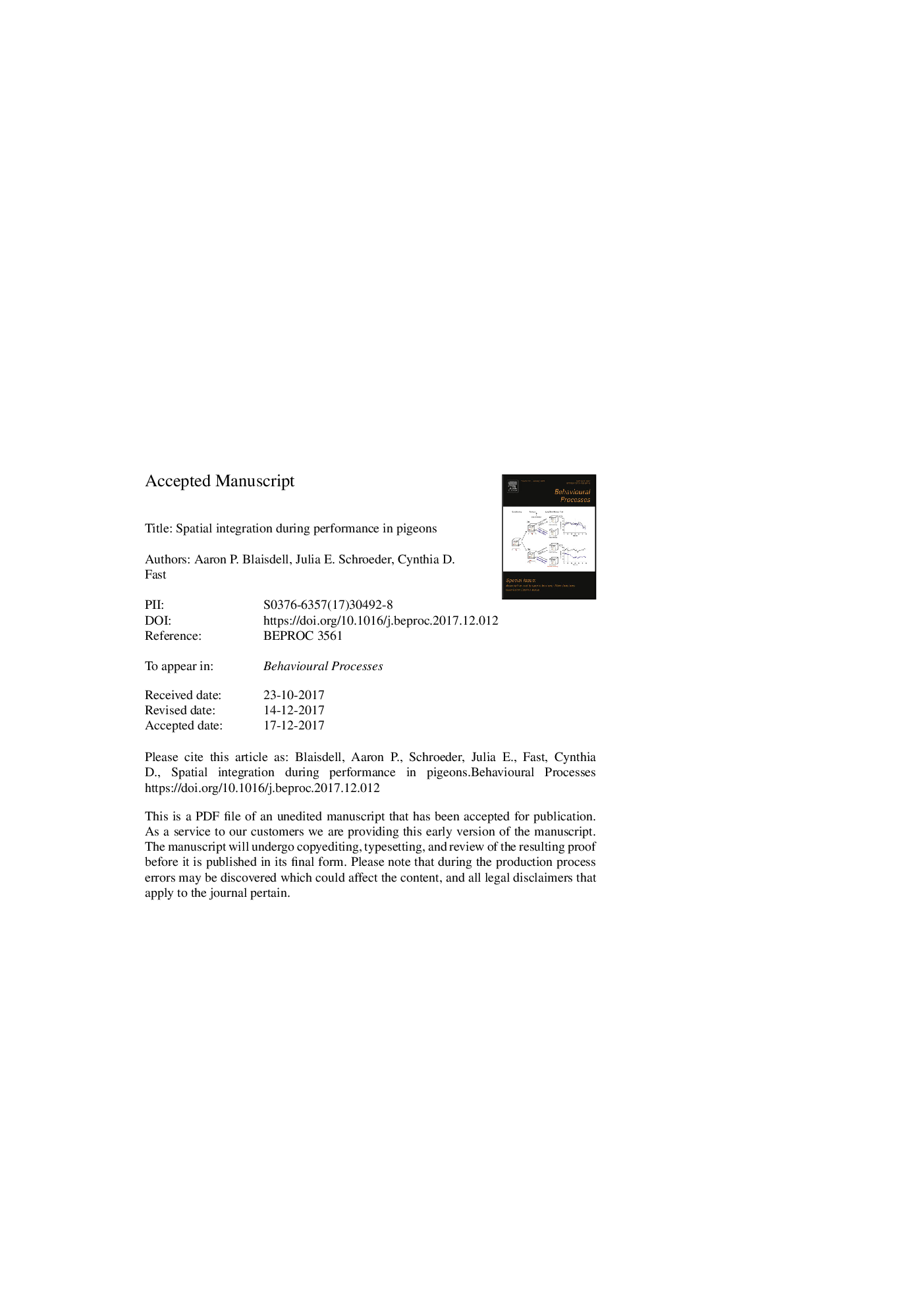| Article ID | Journal | Published Year | Pages | File Type |
|---|---|---|---|---|
| 8496914 | Behavioural Processes | 2018 | 29 Pages |
Abstract
We've shown that pigeons can integrate separately acquired spatial maps into a cognitive map. Integration requires an element shared between maps. In two experiments using a spatial-search task in pigeons, we test spatial combination rules when no shared element was present during training. In all three experiments, pigeons first learned individual landmark-target maps. In subsequent tests involving combinations of landmarks, we found evidence that landmarks collaborate in guiding spatial choice at test (Experiment 1). In Experiment 2, pigeons were trained on two landmarks with different proximities to the target. On tests on a compound of both landmarks, pigeons showed stronger spatial control by the more proximal landmark, a performance overshadowing effect. Extinction of the proximal landmark shifted spatial control to the non-extinguished distal landmark. This reveals that the performance overshadowing effect was associative in nature, and not due to perceptual or spatial biases. This emphasis on spatial control during performance reflects the emphasis on performance processes that were a major focus in Ralph Miller's lab.
Related Topics
Life Sciences
Agricultural and Biological Sciences
Animal Science and Zoology
Authors
Aaron P. Blaisdell, Julia E. Schroeder, Cynthia D. Fast,
